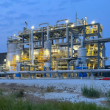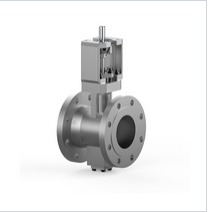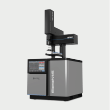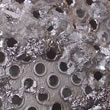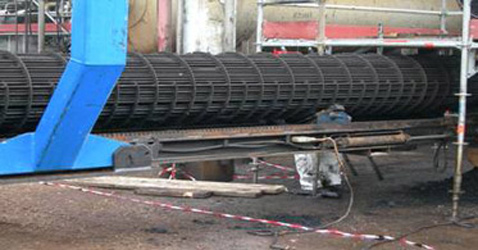Aug-2022
Stationing an operator at a pressure safety valve bypass
Caution is recommended before stationing an operator at the PSV bypass for overpressure protection.
Jonathan R Webber
Fluor Canada Ltd
Viewed : 4985
Article Summary
Preventing overpressure in process plants is critical for the protection of the public, operators, environment, and equipment. Sufficient overpressure above the design pressure can result in failures of pressure-containing parts, leading to potential injuries and contamination of the environment. Significant effort is made in the design phase to ensure adequate overpressure protection is provided.
Overpressure protection is principally provided by pressure safety/relief valves (PSVs), which are self-actuated devices designed to open when the operating pressure at the PSV inlet reaches the PSV set pressure. The opening of the valve allows the process fluids to be safely released to atmosphere or a flare system where they are combusted at a flare tip. The three standard PSV types are conventional, balanced bellows, and pilot-operated valves. A schematic of a conventional type of PSV is provided in Figure 1. Other references can provide explanations of how these valves and flare systems work.1, 2, 3
PSVs are typically designed to be the last line of defence to prevent overpressure after operational oversight, basic process controls, and safety instrumented systems (SIS) have failed to intercede. The set pressure of the PSV is typically set at or below the protected system design pressure. The PSV orifice is sized according to the upsets to ensure the pressure in the protected equipment/piping does not exceed code-specified allowable overpressure.
PSV testing frequency
API-521 is a common standard used for determining the required relief loads that the PSVs must pass to prevent overpressure.4 The PSV orifice must be sized to allow the required flow to pass. Preliminary PSV sizing of the orifice is typically performed using API-520,1 which is then validated by the PSV vendor as part of the procurement process.
PSVs must occasionally be removed to undergo testing and/or maintenance. If the frequency of the PSV testing/maintenance is higher than the frequency of the unit turnaround (i.e., when the unit is shut down) then it is occasionally proposed to remove the PSV while the unit is in operation by closing the PSV inlet/outlet isolation valves. Adequate overpressure protection is still required while the unit is in operation. Nonmandatory Section ASME BPVC XIII B-7 states that full area stop valves are permitted upstream/downstream for isolation of a PSV if:
(a) Administrative controls are provided to prevent unauthorised valve operation.
(b) Valves are provided with mechanical locking elements.
(c) Valve failure controls are provided to prevent accidental valve closure due to mechanical failure.
(d) Procedures are in place to provide pressure relief protection during the time when the system is isolated from its pressure relief path. These procedures shall ensure that when the system is isolated from its pressure relief path, an authorised person shall continuously monitor the pressure conditions of the vessel and shall be capable of responding promptly with documented, predefined actions, either stopping the source of overpressure or opening alternative means of pressure relief. This authorised person shall be dedicated to this task and shall have no other duties when performing this task.
(e) The system shall be isolated from its pressure relief path only for the time required to test, repair, and/or replace the pressure relief device.6
Sections a) and b) are typically satisfied by implementing a rigorous site lock or car-seal programme. The isolation valves are under strict administrative control. Proper authorisation is required before any administratively controlled valve is manipulated. Section c) is typically addressed by installation of the gate valve stems horizontal or at 45 degrees to minimise the chance of a broken gate falling and restricting the open path.
The requirements under sections d) and e) are the topic in the sequel of this document. It is sometimes proposed to satisfy requirement d) by stationing an operator at the PSV bypass. The intent is that the operator will manually open the PSV bypass valve to prevent overpressure. In lieu of the PSV, the manual operation of the bypass valve becomes the last line of defence against overpressure.
Stationing an operator at the PSV bypass appears to have been proposed more frequently 15+ years ago. However, it is still occasionally proposed today, perhaps at times without considering all the implications. This practice must be approached cautiously, especially in hazardous services where failure of the operator to open the bypass valve in time results in severe consequences. In the sections below, a critical review of the practice is presented, along with several cautions.
Operators should be afforded flexibility in the operation of their plant, and operator interventions will always be an important part of day-to-day operations. The considerations in this discussion are limited to cases where the last line of defence (PSV) is removed and replaced with manual operation of the PSV bypass valve.
Typical PSV installation
A typical installation of a PSV on a vessel is shown in Figure 2. The inlet piping is sized to ensure the PSV does not chatter, and the outlet pipe is sized to ensure the back pressure does not negatively affect the operation/capacity of the PSV.1 The bypass valve is normally closed. When the PSV is removed, the inlet/outlet car-sealed/locked (CSO/LO) isolation valves will be closed and blinded.
The expectation upon the operator is that they will be able to open the bypass valve in time to relieve the impending overpressure. It is likely the operator would be provided with a radio and be in communication with the operations group at the control panel who are monitoring the system. The operator may also be provided with a local pressure gauge, mounted on a nearby available ¾” vent, to monitor the system pressure.
Discussion
The following sections describe several considerations that should be addressed before implementing the practice of stationing an operator at the bypass when the PSV is removed.
Regulatory requirements
Some codes restrict the use of valves between the protected equipment and PSV. For example, ASME BPVC Section I PG-71.3 prohibits installation of any valve between the boiler and PSV, making it impossible to isolate the PSV while the unit is operating:
“No valve of any description shall be placed between the required pressure relief valve or valves and the boiler, nor on the discharge pipe between the pressure relief valve and the atmosphere.”7
While ASME BPVC XIII nonmandatory Appendix B6 allows the use of PSV isolation valves, other local jurisdictions can have more stringent requirements. They may prohibit operation without a PSV or require special approval for alternative methods of overpressure protection when a PSV is not used. If there is any doubt, it is best to confirm with the local authority that the practice of stationing an operator at the PSV bypass is allowed when the PSV is removed.
Categories:
Add your rating:
Current Rating: 4









